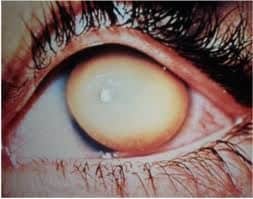 It’s 2pm on a Saturday and the regular crowd shuffles in. Sorry that’s a Billy Joel song. It’s 2pm on a Saturday and a 23 year old male presents after being struck in the eye by a squash ball. You quickly look and it’s a ……….HYPHAEMA.
It’s 2pm on a Saturday and the regular crowd shuffles in. Sorry that’s a Billy Joel song. It’s 2pm on a Saturday and a 23 year old male presents after being struck in the eye by a squash ball. You quickly look and it’s a ……….HYPHAEMA.
A hyperaemia is defined as blood in the anterior chamber of the eye.
3 THINGS TO CONSIDER.
1 How do we grade Hyphaemas?
Grade 1 <1/3 of the anterior chamber has blood in it
Grade 2 1/3 – 1/2 of the anterior chamber has blood in it
Grade 3 >1/2 of the anterior chamber has blood in it, but it is not totally filled.
Grade 4 Total filling of the anterior chamber
2 How do we, in the ED, treat patients with hyphaemas?
-Shield the eye(not patch)
-Rest the eye- no watching TV or reading. Pupillary changes must be minimised.
-Sedation sometimes assists.
-Analgesia
-Sitting at a 30-45 degree angle may improve the settling. It can result in earlier clearing and more rapid improvement of visual acuity.
3 What to beware of?
-Always test visual acuity and Afferent Pupillary defect
-Raised intraoccular pressure occurs in about 1/3 of cases
-Secondary bleeding occurs in 25% of cases and results in worst prognosis in terms of visual acuity.
-BEWARE with this history NOT TO MISS THE GLOBE RUPTURE.
4 What are the potential complications?
-Optic Atrophy
-Corneal Staining
-Ghost Cell Glaucoma- the red blood cells lose their haemoglobin and block the trabecular meshwork.
Who can we discharge?
Patients with Grade I hyphaemas and no other complications can go home
Who needs ophthalmology?
Grade 4 hyphaemas, raised intraoccular pressure, or anyone with sickle cell disease or trait.
Peter Kas












Hyphaema – Resus
ahgfcgwrvgd
[url=http://www.g29fzfbt6730xw95xv7tq89z3q6b20z6s.org/]uhgfcgwrvgd[/url]
hgfcgwrvgd http://www.g29fzfbt6730xw95xv7tq89z3q6b20z6s.org/
Automatic Floor Cleaning Robot
Burberryバーバリーバッグコピー
MCMエムシーエム財布スーパーコピー
2.2 Lcd Tft Color Display Factories
コピー時計
Led Bathroom Downlights Ip65
Gym Gloves For Men
Diorディオールコピー激安
Experts Weigh In On The Future of The Local Livestream – 303 Magazine
Diorディオール帽子スーパーコピー
Medical Trolley Cart
Cartierカルティエネックレスコピー
ブランド財布コピー
CNC Machining Parts Drone
ブランドコピー代引き
Clear Zinc Oxide Powder
(TRIMETHYLSILYL)ETHYLENE
ブランドコピー専門店
Pressure Testing Machines
Panel Saw Woodworking